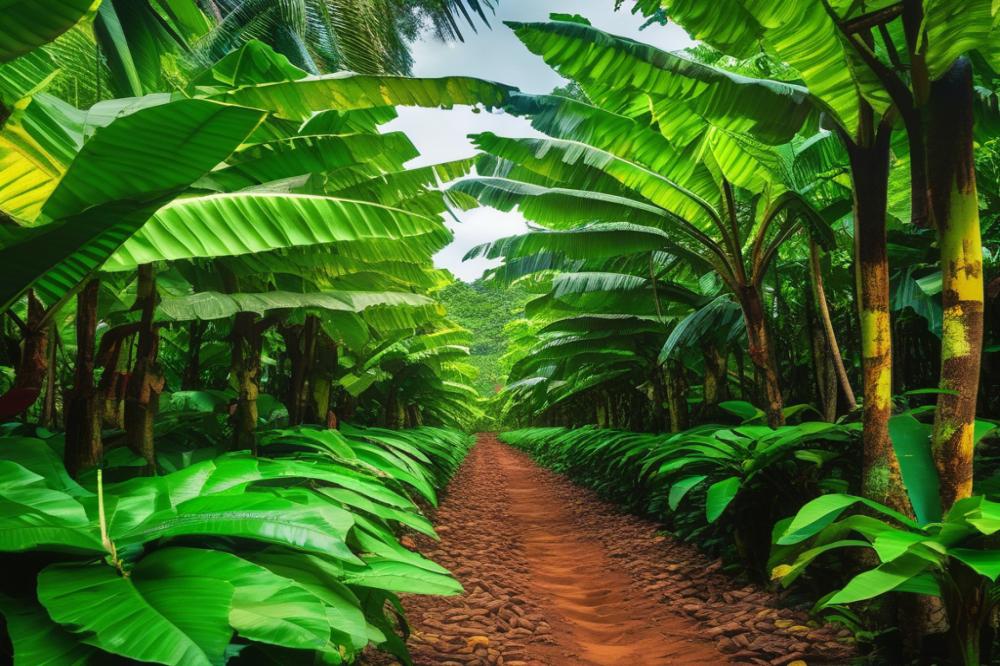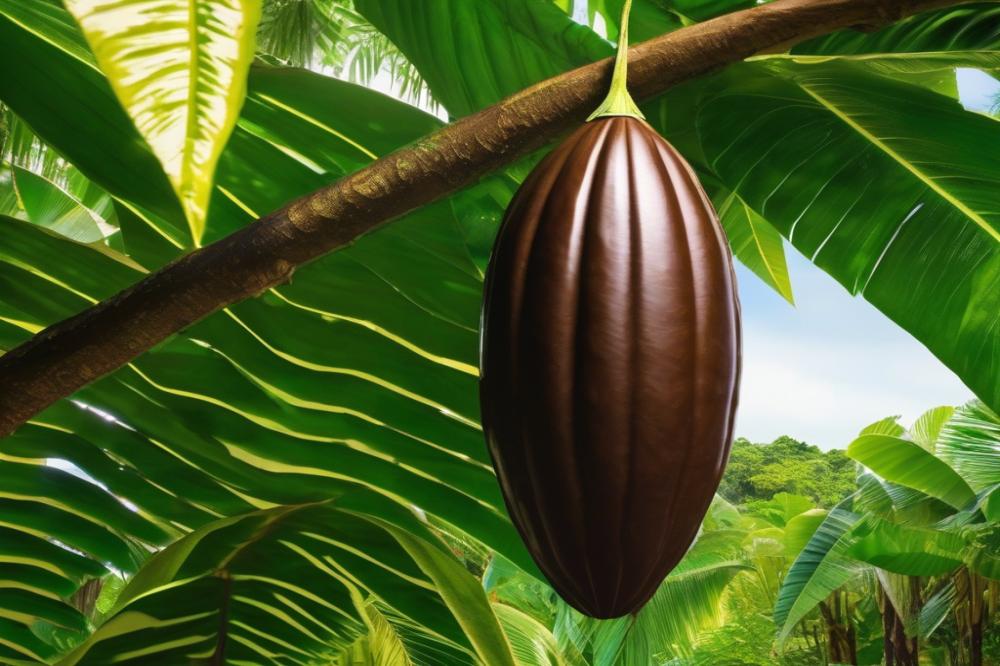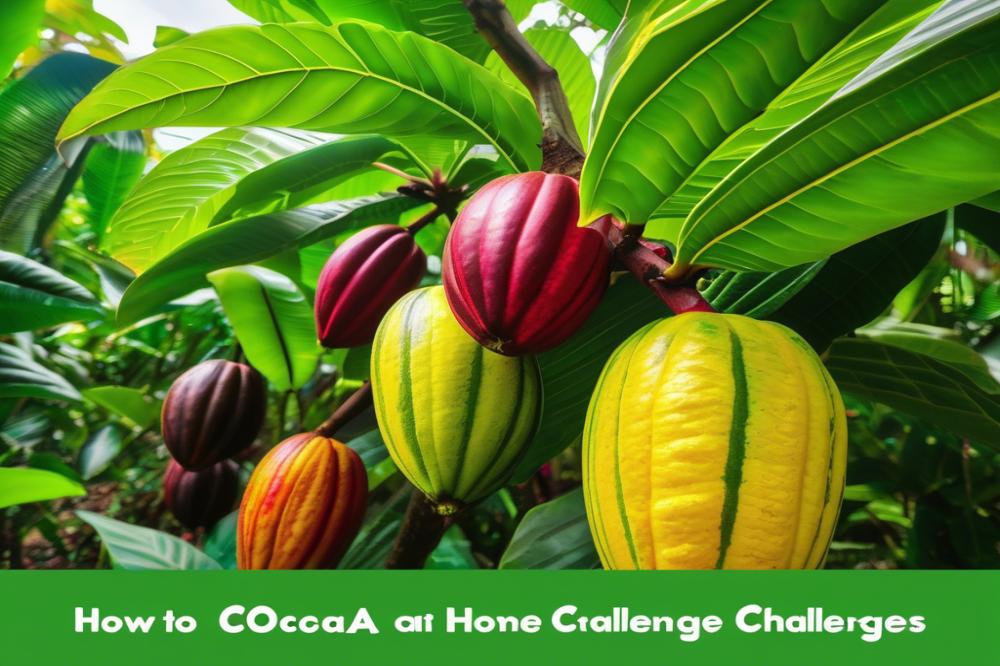Understanding Cocoa Varieties: Criollo, Forastero, and Trinitario
The Cocoa plant plays a vital role in global agriculture and culinary traditions. It provides us with the beloved cacao beans, the essential ingredient for chocolate. For centuries, chocolate has been a source of joy, celebration, and indulgence. Its rich, complex flavors captivate many taste buds worldwide. The journey from bean to bar involves careful cultivation, fermentation, and sourcing, making it a fascinating process.
Diving into the world of chocolate production reveals an essential concept: Cocoa Varieties. Among these, Criollo, Forastero, and Trinitario stand out as the main types grown today. Each variety possesses distinct characteristics that influence the final flavor profiles of chocolate. Forastero, often considered the workhorse of cocoa types, is renowned for its robustness and higher yield. In contrast, Criollo is prized for its rare and nuanced taste, appealing to chocolate connoisseurs and artisanal producers alike.
Understanding these cocoa varieties impacts the entire chocolate-making process. Different types contribute varying flavors to chocolate, affecting everything from taste to texture. Knowledge of these distinctions helps manufacturers craft unique products that resonate with consumers. Additionally, choices made regarding cultivation practices and sustainability reflect the quality of cocoa sourced. As more people seek to support ethical practices, recognizing the importance of each variety becomes increasingly crucial in today’s market.
Cocoa Varieties
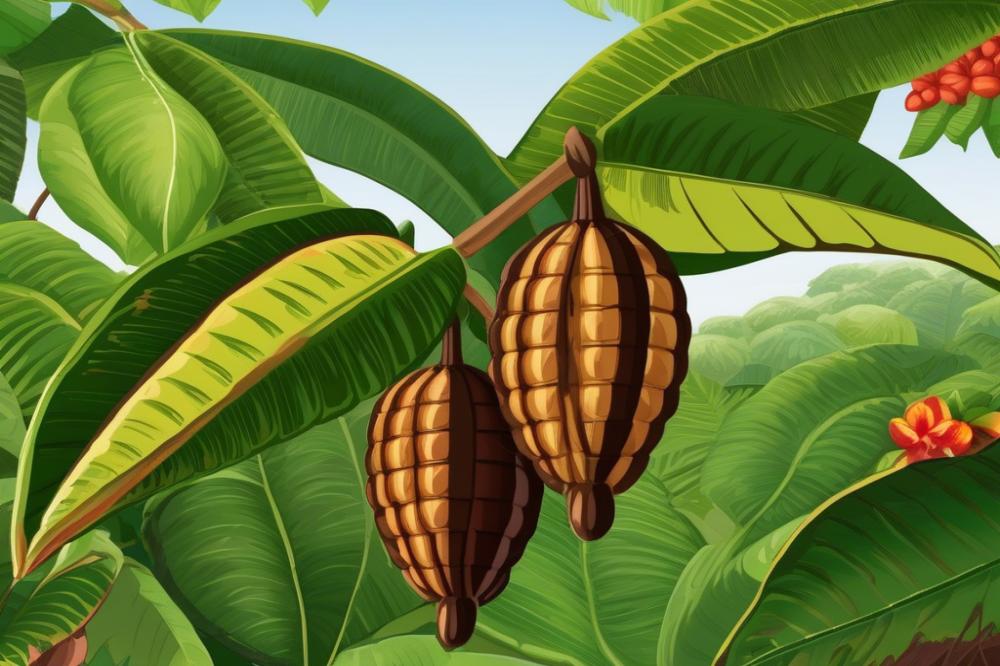
Cacao plants produce three main types of chocolate: Criollo, Forastero, and Trinitario. Each variety has distinct characteristics and plays a vital role in the chocolate industry. Understanding these cocoa types is important for anyone interested in crafting or tasting chocolate.
Historical Background
The Criollo variety is often hailed as the most ancient. Indigenous people cultivated it in Central America for thousands of years. Its rarity contributes to its premium status. Farmers have found it challenging to grow due to its susceptibility to diseases. Thus, consumers often pay a higher price for this exceptional cacao.
Forastero, on the other hand, has a different story. This variety originates from the Amazon rainforest and is now the most widely grown type of cacao. Its resilience against pests and diseases has made it the choice for large-scale chocolate production. Forastero accounts for about 80% of the world’s cacao supply, largely due to its favorable cultivation traits.
Trinitario results from a hybridization between Criollo and Forastero. This variety emerged in Trinidad after a catastrophic event in the 18th century wiped out Criollo crops. Growers began to crossbreed the two varieties to develop a more resilient plant while maintaining desirable flavor profiles found in Criollo. Today, Trinitario is cherished for its balance of flavor and hardiness.
Genetic Differences
Genetic analysis reveals interesting distinctions among these cacao varieties. Criollo has a complex genetic makeup that leads to its unique flavors. These beans are known for their floral notes and refined taste. Meanwhile, Forastero possesses a simpler genetic structure. This simplicity contributes to its more robust and earthy flavors. Its lower price reflects its common usage in commercial chocolate.
Trinitario’s genetics show a blend of both other varieties. The combination brings out enhanced flavors while also providing disease resistance. This hybrid is celebrated in craft chocolate circles for its intricate taste and aroma. In terms of cultivation and sustainability, Trinitario offers a middle ground between rarity and reliability.
When it comes to sourcing cacao beans, growers often look for sustainability. Ethical sourcing practices can benefit both farmers and consumers alike. Increased awareness of farming techniques is vital, especially with Forastero’s widespread use. Many chocolate producers now prioritize sustainable methods to maintain the quality of their products. Fermentation plays a crucial role in developing the depth of flavor found in all three varieties. The time and method of fermentation can greatly influence the final taste of chocolate.
Forastero: The Backbone of Chocolate

Forastero cocoa beans form the foundation of the global chocolate industry. Known for their robustness, these beans are widely used due to their strong flavor and high yield. Most of the world’s chocolate production relies heavily on Forastero because it is easier to grow and less susceptible to diseases than other varieties. This durability makes it a popular choice among farmers and producers.
Characteristics of Forastero Cocoa Beans
Typically, Forastero beans have a more bitter and earthy taste compared to Criollo and Trinitario. Their distinct profile includes notes that are sometimes described as woody or nutty, lacking some of the complex flavors found in other cacao varieties. Many chocolate makers appreciate their consistency, which allows for dependable results in mass production.
Flavor Profiles and Uses in Chocolate Production
While not as fragrant as some other types, Forastero beans serve as the backbone in chocolate bars and products. Manufacturers frequently blend them with other types to create well-rounded flavor profiles. Often used for bulk chocolate, this variety finds its place in everything from everyday chocolate bars to less expensive confections. Particularly, its strong flavor holds up well in products mixed with sugar and milk.
Cultivation Methods and Regions Where Forastero is Grown
Growing Forastero cacao involves specific cultivation methods. Farmers prefer regions with tropical climates, usually near the equator. Countries in West Africa, like Ghana and Ivory Coast, dominate the Forastero market. In these areas, farmers often practice traditional farming techniques that have been passed down through generations. Harvesting typically involves hand-picking ripe pods, followed by fermentation processes that develop the beans’ flavor.
Sourcing and Economic Significance
Sourcing Forastero beans impacts many local economies. Farmers rely on these crops for their livelihoods. The demand for affordable chocolate means that Forastero plays a crucial role in sustaining local communities. Companies increasingly focus on sustainability when sourcing cacao, ensuring that farming practices are responsible and beneficial to the environment and local growers.
Criollo: The Fine Cocoa
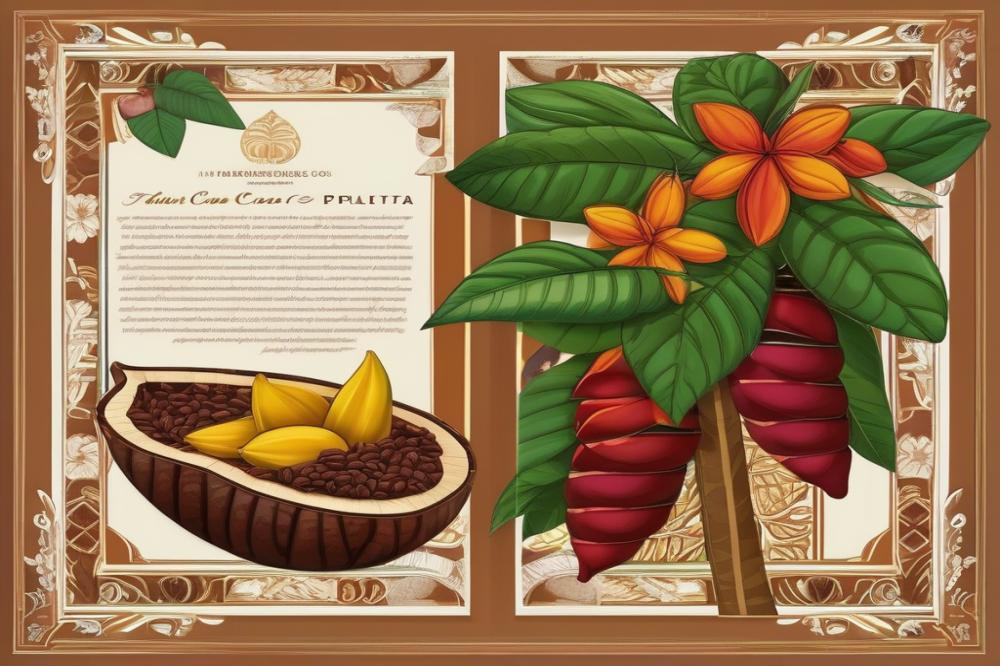
Criollo cocoa beans are often regarded as the finest variety of cacao. These beans are known for their delicate and sophisticated flavor profiles. Farmers grow Criollo primarily in Central and South America. The traits of these beans include a lighter color and thinner shells compared to other types.
Flavor profiles of Criollo beans display subtlety and complexity. Tasting notes often highlight hints of red fruit, nuts, and spices. This rich flavor dramatically elevates the quality of chocolate products. For many chocolate enthusiasts, Criollo’s intricate taste is what sets high-end chocolate apart from mass-produced options.
Cultivation presents considerable challenges for Criollo farmers. This variety is more susceptible to diseases and pests than Forastero and Trinitario. Various factors contribute to its limited availability, with climate changes and deforestation impacting production. Consequently, sourcing Criollo beans can be difficult and expensive, influencing the market.
Fermentation processes play a crucial role in developing Criollo’s rich flavors. Traditional methods involve local practices passed down through generations. Many farmers monitor temperature and humidity closely. Quality fermentation is vital as it affects the end flavor in chocolate production. Proper methods can intensify the distinct taste of these rare cacao beans, underscoring the importance of tradition.
Sustainability is another critical issue in the cultivation of Criollo cocoa. As demand for quality chocolate grows, more focus shifts toward eco-friendly practices. Farmers are adopting organic methods to combat the challenges faced. Ensuring that the bean’s characteristics flourish while maintaining healthy ecosystems is vital for the future of chocolate.
Trinitario: The Hybrid of Flavor
Introduction to Trinitario and its origins
Trinitario is an intriguing hybrid between Criollo and Forastero cacao beans. It emerged in the Caribbean after Criollo trees suffered from disease and a decline in cultivation. Farmers sought a resilient alternative, combining the best traits from both parent varieties. This crossbreed began to thrive, particularly in Trinidad, leading to its name.
Flavor profiles that combine characteristics of both Criollo and Forastero
The flavor profiles of Trinitario are rich and diverse. You will find nuances of Criollo’s fruity and floral notes mixed with the boldness of Forastero. Such complexity makes Trinitario a favorite among chocolate makers. Many describe its taste as robust yet refined, delivering a balanced sweetness that appeals to chocolate lovers everywhere.
Cultivation techniques and regions of growth
Cultivating Trinitario requires specific techniques. Farmers pay special attention to soil health, as it directly affects flavor development. This variety thrives in humid, tropical climates and is primarily grown in regions like Central America and West Africa. Fermentation, an essential step in the process, enhances the unique flavors found in the beans.
Sustainability and sourcing practices in Trinitario production
Sustainability plays a crucial role in Trinitario’s production. Many growers are shifting to organic practices to reduce environmental impact. Sourcing responsibly from local farms supports both the economy and the ecosystem. As a result, chocolate made from Trinitario beans often leaves a smaller carbon footprint while still maintaining high quality. Emphasizing ethical farming helps ensure future generations can enjoy this wonderful chocolate.
Fermentation and Its Role in Flavor Development
Fermentation is a crucial step in the transformation of cacao beans into the delicious chocolate we adore. During this process, the beans are placed in shallow containers and covered with banana leaves or other materials. Yeasts and bacteria naturally present in the environment begin to break down sugars in the pulp surrounding the beans. As a result, heat is produced. This heat can reach temperatures of around 50 degrees Celsius, which helps to kill the seed embryos inside the beans. The mixture undergoes a complex series of chemical changes that ultimately affects the final flavor.
Each variety of cocoa displays different responses to fermentation, leading to distinct flavor profiles. Forastero, known for its hardiness, typically produces a more bitter flavor. Many chocolate producers appreciate its robust qualities for mass-market chocolate production. Criollo, in contrast, often develops sweeter and more subtle flavors. The complexity of Criollo is often admired by gourmet chocolate makers. Trinitario, a hybrid of these two, combines characteristics, leading to a rich yet balanced profile. This variety can express both sweetness and bitterness, depending on fermentation methods.
Best Practices in Fermentation for Various Cacao Types
Cultivation methods influence how beans should be fermented. For Criollo, short fermentation times of about three to five days are recommended. This helps preserve its delicate flavors while still allowing for essential transformations. In contrast, Forastero is generally fermented for longer periods due to its straightforward flavor development. Many producers opt to ferment it for five to seven days, which magnifies its inherent bitterness.
The approach to Trinitario can vary. Depending on the desired flavor profile, fermentation can take anywhere from four to seven days. Sourcing quality beans is critical, as the initial quality significantly impacts the end product. Additionally, maintaining cleanliness during fermentation minimizes the risk of undesirable flavors. Regular monitoring is essential to ensure fermentation is processing correctly. Each producer may experiment with techniques, but these guidelines remain fundamental in achieving quality chocolate.
In recent years, the conversation around sustainability has grown. Raising awareness of environmentally friendly practices in cacao cultivation and fermentation is crucial. Educating farmers about these methods can lead to improved cacao quality while also being kinder to the earth. When producers engage in sustainable practices, they are not only helping their own businesses but also contributing to the broader chocolate community.
Sustainability in Cocoa Cultivation
Eco-friendly practices play a crucial role in sourcing cocoa varieties like Forastero and Trinitario. Farmers are increasingly adopting methods that protect the environment. Techniques such as agroforestry involve planting cacao beans alongside other trees. This not only promotes biodiversity but also helps maintain healthy soil. Furthermore, these practices can enhance the flavor profiles of chocolate. Fermentation processes improve when beans are grown under optimal conditions.
Sustainable farming is vital for the future of chocolate production. Growing demand for ethically sourced products influences market trends. Consumers are becoming more aware of where their chocolate comes from. Supporting sustainable methods ensures that farmers can continue to produce high-quality cacao beans. Increasing pressures from global trade also require farmers to consider their environmental impact.
Climate change poses significant threats to cocoa cultivation. Rising temperatures can negatively affect the growth of cacao plants. Additionally, increased rainfall and unpredictable weather patterns can disrupt harvests. These challenges may reduce the supply of certain varieties. Trinitario, with its delicate properties, could be particularly vulnerable. Preserving genetic diversity in cocoa is essential to adapt to changing conditions. Fostering sustainability will help safeguard the future of the chocolate industry.
Wrapping Up Our Exploration
Understanding the various types of cacao is key for anyone who enjoys chocolate. Each variety brings its own flavor profile and characteristics to the table. Criollo, Forastero, and Trinitario each play significant roles in the chocolate industry. Knowledge of these differences can elevate the chocolate experience for consumers.
Looking ahead, the future of chocolate production seems to hinge on sustainability. With climate change threatening cacao farms, it is vital to adopt practices that protect these crops. Farmers face challenges, but innovation and commitment can lead to better farming techniques. As consumers, we can support brands that focus on ethical sourcing. Sustainable practices can help ensure that future generations enjoy the same delightful treats.
People should be encouraged to appreciate the diversity of cacao beans when making chocolate choices. This awareness can enrich the experience of tasting chocolate. By opting for high-quality products that highlight distinct varietals, chocolate lovers contribute to the preservation of these unique flavors. Whether it’s the rich notes of Criollo or the robustness of Forastero, every bite tells a story. Embracing these differences helps the chocolate community thrive while promoting a more sustainable future.

